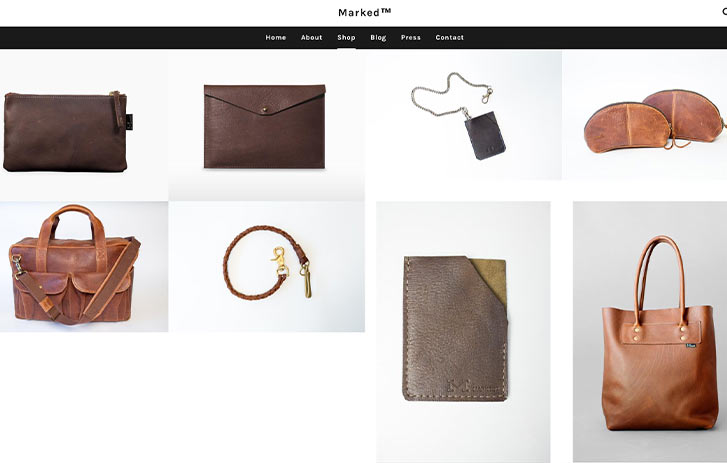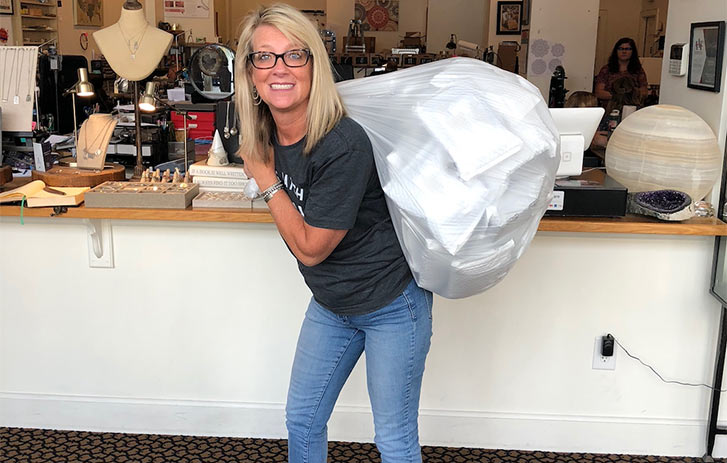Plan your inventory for the peak season



FedEx Small Business Grant winner Diana Ganz, co-founder of SuitShop
How to order enough inventory, without getting stuck with a surplus
Planning inventory for rush season can cause sleepless nights for small business owners. “It’s a learning curve,” according to Diana Ganz, co-founder of SuitShop, an online store that sells suits to wedding parties for less than the cost of suit rentals. She and other FedEx Small Business Grant (a legacy program) winners shared the strategies that work in planning inventory for successful busy seasons.
Take advantage of your customers' digital footprints
Website data was crucial in helping Diana forecast SuitShop’s inventory needs. She analyzed data from her initial six months of sales to develop a model that considers the popularity of suit colors and the distribution of sizes to forecast demand. She’s been refining her model ever since.
Diana monitors web traffic to her various product pages to track trending suit styles and anticipate customer preferences. She even has a wedding dashboard feature on her website that allows brides and grooms to plan their wedding details, including their color palette. Diana exports this color data and uses it to project upcoming color trends.
Implement inventory tracking software
Anne Hed, founder and CEO of Hed Cycling Products, a manufacturer of premium bicycle wheels and components, has implemented an enterprise resource planning (ERP) system to help her business keep a handle on inventory.
“A sales person can track a wheel and tell the customer where it is in the manufacturing process and when it can ship,” says Anne. This insight helps her predict where there may be gaps in meeting customer orders so she can self-correct in advance.
Don’t leave money on the table
Underestimating demand can have serious consequences for businesses. “Running out of inventory in recent years has hurt our business, since most of our customers don’t like to wait more than a few weeks for our product,” says Anne. “We have been better about planning, but we still make mistakes.”
In managing inventory for a growing business, Ibrahima Diallo, co-founder and CEO of Ginjan Bros, the seller of a traditional West African ginger juice, finds it’s better to exaggerate inventory needs. “Always have more than you think you’ll need and have contingency plans in place to address how to move excess product,” says Ibrahima. Diana from SuitShop has a similar approach; she says she adds another twenty percent to her inventory orders to account for growing demand.



Founder and CEO of Hed Cycling Products Anne Hed, a FedEx Small Business Grant winner
“The key to inventory management is frequent deliveries, not large quarterly deliveries, as that sends an oscillation into your supply chain.”
Avoid overloading your supply chain
According to Diana, a key to managing inventory is consistency. SuitShop’s peak months are from January to March and July to August, the ordering times for summer and fall weddings, respectively. To build up her inventory for these busy times in advance, she places three consecutive monthly orders for suits and accessories at a higher volume than usual rather than placing one large order all at once.
“The key to inventory management is frequent deliveries, not large quarterly deliveries, as that sends an oscillation into your supply chain, so you’re getting a ton, and then you go months without anything,” says Diana. “We just always need inventory coming in and at a steady rate.”
Forecast carefully to avoid a surplus
While it’s important to have enough stock, other businesses worry about building up too much inventory for their busy season. Judith Irving, founder of Fat Toad Farm, a business that makes homestead goat’s milk caramel sauce, says, “We begin to pull back on production as we get into the November and December timeframe so that we do not overproduce, compared to orders, and have too much inventory going into January.”
Scott Loesser, owner of MarkedTM, a maker of unique leather accessories, compares last year’s sales to this year’s sales to make his inventory projections. “Are normal sales better than the years before?” asks Scott. “If yes, we plan for a holiday with higher sales. If not, then we plan for similar sales to previous holidays.”



Leather products sold by FedEx Small Business Grant Contest winner Scott Loesser
Test new products prior to your rush season
Heidi Hale, owner and CEO of HeidiJHale Designs and Details, a seller of handmade custom jewelry, says observing sales in her slow season, the summer, is key to making forecasts for her busy season surge.
“We take advantage of this time to prepare for peak seasons and create new designs,” says Heidi, whose biggest bump in business occurs around Mother’s Day and Christmas. “Launching new designs during a slower time allows us to get a better picture of how a design will do during rush season. Always test the waters of a product during slow times.”
Keep vendors informed
Heidi says strong vendor relationships are critical to keeping her inventory supply chain running smoothly. She keeps in close contact with all of her suppliers, communicating her sales forecasts in advance to make sure they will have enough material when she needs to order. “Always do research and find the next supplier you would trust,” says Heidi. “Have a back-up list ready to call, if needed.”



Heidi Hale, owner and CEO of HeidiJHale Designs and Details, prepares her products for shipment.
Be adaptable
Above all, be prepared to face unknowns and be nimble during your high-demand season. “You can never be too prepared for the issues that will come up during rush season,” says Heidi. “And if you are going crazy, it means sales are going crazy, and that's a great thing.”
For more information about how FedEx can help you manage your supply chain, optimize your inventory, and help your business grow, explore FedEx Fulfillment.
Related reading

Seven tips for peak planning
Get advice from FedEx Small Business Grant (a legacy program) winners on how they make the most of their peak season.
read article
Peak season staffing
Get tips on staffing up for your small business peak season from Ibrahima Diallo, co-founder of Ginjan Bros.
read article
Company Christmas cards and holiday messages to clients
There are unspoken rules associated with company Christmas cards. Here’s how to effectively communicate a Happy Holidays message to clients.
read article